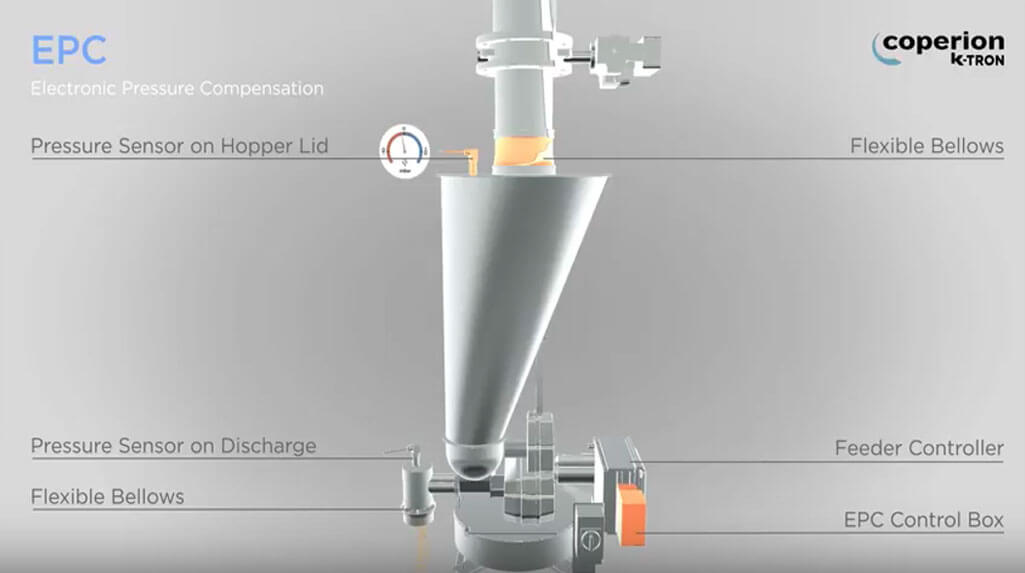Pressure fluctuations can seriously impact the weighing accuracy of a feeding system. Where gravimetric feeders operate in a closed system, changes in pressure within the feeder hopper or the outlet tube may push up or down on the feeder resting on its scale or load cells. This leads to incorrect weight signals, causing erroneous mass flow and poor feeding accuracy.
How to remedy the pressure trouble
Traditionally, these troublesome pressure fluctuations have been compensated for by mechanical means such as flexible bellows. Mechanical tolerances, the alignment and age of the bellows, etc. are factors which can impact the mechanical pressure compensation and prevent it from fully compensating for the forces generated by changing pressures, making this costly solution deficient.
Coperion K-Tron has addressed these issues with the development of the effective but simple Electronic Pressure Compensation, EPC™. This solution has shown to significantly improve feeding accuracy of gravimetric feeders in closed systems and can be less expensive than traditional solutions. In addition, EPC™ is more effective and reliable, maintenance free, and easy to retrofit on existing systems.



